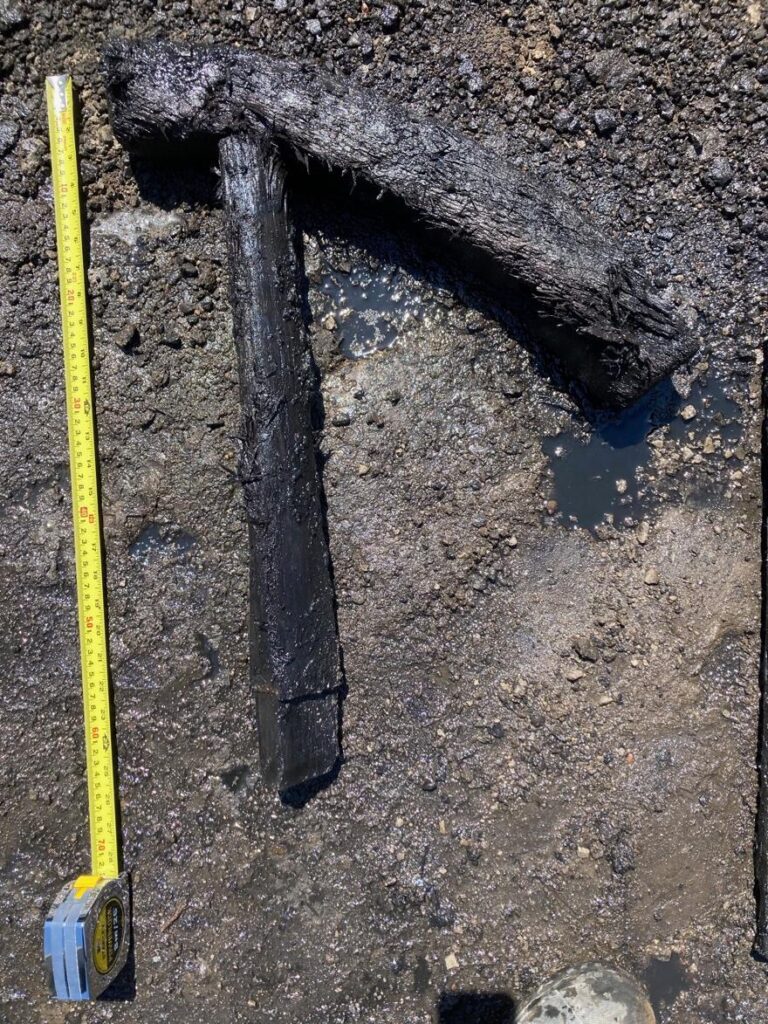INTRODUCTION
The Gowanus Remediation Team (GRT) continues with the dredging of soft sediments from RTA-1 under the oversight of the EPA. The dredge material is being processed according to the Level 1 Archaeological Monitoring protocol outlined in the draft Cultural Resource Monitoring Plan (revised September 2020). This protocol calls for dredged soft sediments to be placed directly into scows, floated to the Dredge Material Processing Facility (Processing Facility), and screened over 4” bars on a vibrating platform. Items removed during the vibratory screening process are then sorted by the Processing Facility machine operator as per the Cultural Resource Monitoring Plan. Items of potential interest (possible artifacts or objects of local interests) are placed in a separate stockpile and photographed daily for the archaeologists to review. These items are then placed in a holding area for the archaeologists to inspect weekly.
RESULTS
An archaeologist conducted a scheduled site visit on 4/28/22 to review the recovered items in person with the assistance of a Processing Facility machine and operator to sort through stockpiled material. Photographs were taken of stockpiled items at the Processing Facility.
The recovered material was spread by machine on a flat hard surface to allow for the archaeologist to clearly review it (Photograph 1). Any item of potential interest was separated, rinsed and assessed. The reviewed material was unsorted and muddy debris comprised largely of rocks, Belgian blocks, large and small pieces of wood and timber, miscellaneous metal, tires and car parts (Photograph 2, 3, 4 and 5). Four items were identified: The hub of a wooden wagon wheel; two sections of two different wagon wheels and a wooden spoke that may or may not belong to one of the sections of wheels (Photographs 6, 7, 8, and 9).









Items Separated for Further Review
The archaeologist identified four items consisting of four different parts of a wagon or cart wheels. Although the items may be of interest, and are not considered artifacts. The items were cleaned and will be stored via submersion in water as an item of interest.
CONCLUSIONS AND RECOMMENDATIONS
The archaeologist concludes that four items observed during the sediment screening at the Processing Facility are not considered artifacts although they may be items of interest. Per the draft Cultural Resource Monitoring Plan, the four items are being held as potential items of interests. The archaeologist further recommends that all the non-historically/archaeologically significant debris at the Processing Facility have been reviewed by the archaeologist as of 4/28/2022 may be disposed of.

